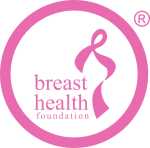The role of Hormonal / Endocrine therapies in breast cancer

Approximately two thirds of breast cancers are oestrogen positive which means they have oestrogen receptors on the surface of the cells and therefore depend on the hormone oestrogen for growth.
This has meant that a range of treatments could be developed with the aim of decreasing the cancer growth or stopping the cancer from coming back by preventing oestrogen action on the cells.
These treatments include: Tamoxifen, Aromatase inhibitors, and Zoladex injections.
But what are they, and how do they work?
Tamoxifen
How it works
This is a synthetic hormone that binds to the oestrogen receptors on the breast cells in place of the woman’s own oestrogen. Unlike natural oestrogen, it does not stimulate breast cell growth and therefore has the effect of “blocking” the receptors.
It can be used in both pre-menopausal and post-menopausal women.
Trials have confirmed that tamoxifen significantly reduces the incidence of local recurrence, metastases (spread of breast cancer to distant organs) and breast cancer in the opposite breast.
It is taken as a single tablet daily.
The benefits have shown to be optimal if taken for a period of 5-10 years.
Side effects
Tamoxifen is in the group of Selective oEstrogen Receptor Modulators (SERMS) which means that it has different effects on different tissues in the body. While it blocks the action of oestrogen in breast tissue, it also has partial estrogen activity in other tissues.
This is the basis for its possible side effects such as hot flushes, vaginal dryness/bleeding and endometrial thickening or polyps.
Other side effects have been associated with its use such as thromboembolism, nausea/diarrhoea, weight gain,headaches or dizziness, and low mood.
It is important to realise that not all patients experience these side effects and some may experience them to a very mild and completely tolerable extent.
Aromatase inhibitors (AIs)
How they work
Aromatase inhibitors are another way of reducing oestrogen effect in post menopausal women. In this group of women, oestrogen is no longer produced by the ovaries, but smaller amounts of oestrogen are still circulating. This oestrogen is derived from androgens which are converted into oestrogen by the aromatase enzyme in peripheral tissues such as fat. The AIs block this enzyme and, in so doing, reduce oestrogen production.
There are 3 main AIs: Letrozole (Femara), Anastrozole (Arimidex), and exemestane (Aromasin).
They are prescribed as a single tablet every day for or at least 5 years.
Sometimes they can be used in sequence with tamoxifen where the patient will switch to an AI after 2-3 years of tamoxifen, or as an extended adjuvant therapy where an AI may be started after 5 years of tamoxifen.
Side effects:
Due to the different mechanism of action, the side effect profile of AIs is slightly different to that of Tamoxifen.
The gynaecological side effects are less of a problem with the use of AIs compared with tamoxifen. However, the AIs may cause joint pain, stiffness and bone loss.
Women who are scheduled to start an AI should have a baseline and then periodic Bone Mineral Density assessments (an outpatient X-ray or DEXA scan). Calcium,Vit D supplementation and, in some cases, bisphosphonates may need to be considered.
Ovarian ablation/ suppression
Surgical removal of the ovaries or ablation of the ovaries with radiotherapy has been shown to arrest breast cancer growth due to the depletion of oestrogen.
Ovarian suppression can be achieved medically by using gonadotrophin-releasing hormone (GnRH) analogs. This has been shown to have equivalent effects as surgical or radiation induced menopause with the added benefit of being reversible after the completion of therapy.
Examples of these treatments are goserelin (Zoladex) and leuprorelin (Lucrin).
They are administered as an injection under the skin either monthly or 3 monthly.
These drugs can be used in combination with tamoxifen and aromatase inhibitors in both pre- and peri-menopausal women.
Resistance
Although tamoxifen and the AI’s have been proven to be extremely effective treatments, resistance to treatment has been described. Further research is being done in order to understand mechanisms of resistance and to combat resistance pathways.
Endocrine treatments such as fulvestrant (Faslodex) are being used in cases of advanced or metastatic disease or recurrence of breast cancer during endocrine therapy. It is an oestrogen receptor down- regulator and is given as a monthly injection.
Selection
The selection of which endocrine therapy or combination of therapies is individualised and depends on whether the patient is pre- or post-menopausal, whether she has contraindications to any of the treatments, treatment interactions with medication she may be taking for other conditions and the extent of the side effects she may develop on the medication. Of course, patient preference is an important consideration. Financial implications may influence treatment decisions too.
Dr Ronelle de Villiers
MBChB, DCH, BSc(med)



 If your appetite is suppressed, if you need to build up muscle, if you need to put weight on, or if you are worried about insufficient protein.
If your appetite is suppressed, if you need to build up muscle, if you need to put weight on, or if you are worried about insufficient protein. Let’s normalise a few things right now:
Let’s normalise a few things right now: First up, let’s be clear that our precious family members and our special friends cannot be our therapists. The honest ones among them will tell you that they really don’t want to be our counsellors either – they just want to be their normal selves – mom, friend, cousin etc.
First up, let’s be clear that our precious family members and our special friends cannot be our therapists. The honest ones among them will tell you that they really don’t want to be our counsellors either – they just want to be their normal selves – mom, friend, cousin etc.
 Buddies For Life is a bi-monthly lifestyle magazine, published by Word for Word Media in association with the Breast Health Foundation, for breast cancer patients, their families and friends. It was launched in June 2011, and 22 issues have been published to date with many more to come.
Buddies For Life is a bi-monthly lifestyle magazine, published by Word for Word Media in association with the Breast Health Foundation, for breast cancer patients, their families and friends. It was launched in June 2011, and 22 issues have been published to date with many more to come. mammography units, radiology centres and support groups. Medipost courier the distribution of the print magazines to all the various distribution points.
mammography units, radiology centres and support groups. Medipost courier the distribution of the print magazines to all the various distribution points.

 It is hard to imagine feeling hot and bothered in our chilly winter weather, but cancer treatment can play havoc with our normal body temperature.
It is hard to imagine feeling hot and bothered in our chilly winter weather, but cancer treatment can play havoc with our normal body temperature.